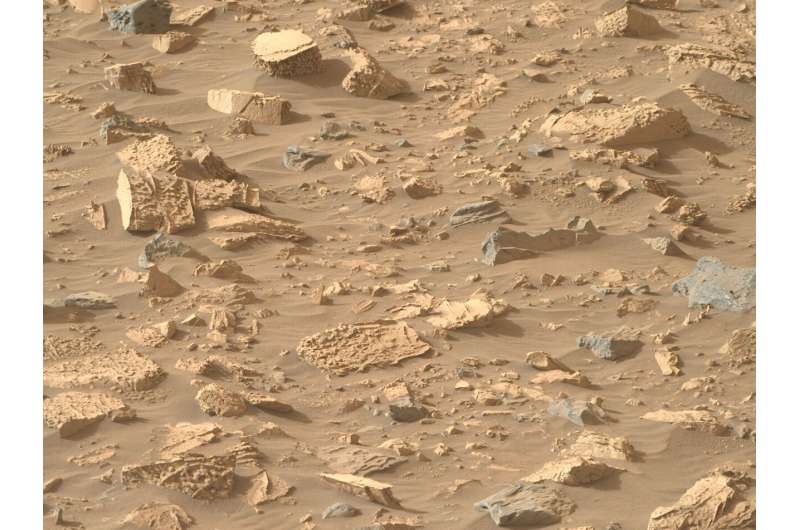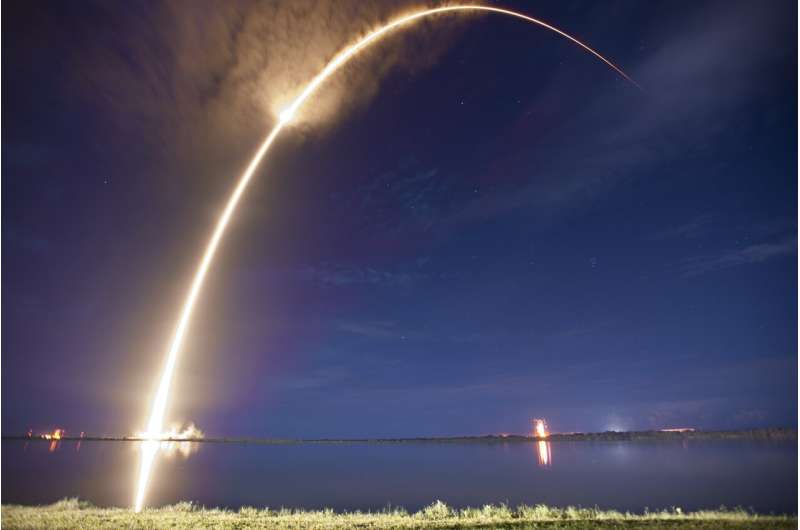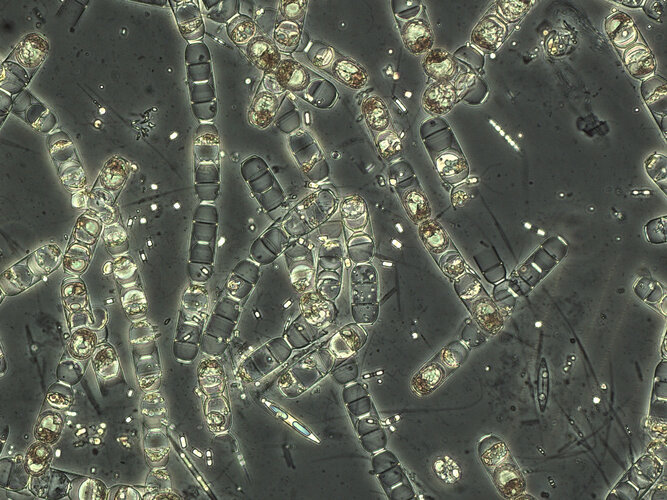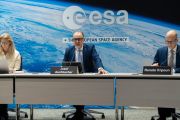
Copernical Team
Perseverance finds 'popcorn'-like rocks on planet Mars

SpaceX switches up missions to set up Cape Canaveral launch tonight

It's been 11 days since SpaceX last lit up the Space Coast sky with a rocket launch, the longest run between launches in more than a year.
It's not for a lack of trying, though, but bad weather and a scrub as the countdown clock hit 0 last week led to SpaceX taking down a Falcon 9 rocket for a Starlink mission and switching it up with a Falcon 9 to launch a European TV satellite on Tuesday night.
The SES 24 mission flying the ASTRA 1P communication satellite for Luxembourg-based communications company SES is set to launch from Cape Canaveral Space Force Station's Space Launch Complex 40 during a window that runs from 5:35-8:24 p.m. The satellite will service TV markets in Germany, Spain and France.
Space Launch Delta 45's weather squadron forecasts only a 55% chance for good conditions, with liftoff winds and the presence of cumulus clouds a concern. The same issues remain in the event of a 24-hour scrub, worsening to only a 45% chance of good conditions.
If it does launch, the first-stage booster will be making its ninth flight and will aim for a landing downrange on the droneship Just Read the Instructions.
Can't stop won't stop: Solar Orbiter shows the Sun raging on

The hyperactive sunspot region responsible for the beautiful auroras earlier in May was still alive and kicking when it rotated away from Earth’s view. Watching from the other side of the Sun, the ESA-led Solar Orbiter mission detected this same region producing the largest solar flare of this solar cycle. By observing the Sun from all sides, ESA missions reveal how active sunspot regions evolve and persist, which will help improve space weather forecasting.
Will climate change turn the Arctic green?

Ariane 6 launches Curium One: space for all

Europe’s newest rocket soon launches, taking with it many space missions each with a unique objective, destination and team at home, cheering them on. Whether into Earth orbit to look back and study Earth, peer out to deep space or test important new technologies, Ariane 6’s first flight will showcase the versatility and flexibility of this impressive, heavy-lift launcher. Read on for all about Curium One, then see who else is flying first.
Watery Planets Orbiting Dead Stars Could Be Good Candidates for Life Study
 The small footprint and dim light of white dwarfs, remnants of stars that have burned through their fuel, may make excellent backdrops for studying planets with enough water to harbor life.
The challenge lies in detecting the shadow of a planet against a former star that has shrunk significantly and ensuring that it has maintained its water oceans for billions of years, even after enduring
The small footprint and dim light of white dwarfs, remnants of stars that have burned through their fuel, may make excellent backdrops for studying planets with enough water to harbor life.
The challenge lies in detecting the shadow of a planet against a former star that has shrunk significantly and ensuring that it has maintained its water oceans for billions of years, even after enduring Pair Plasmas Generated in Laboratory Setting
 Black holes and neutron stars are among the densest known objects in the universe. Within and around these environments exist plasmas, the fourth state of matter alongside solids, liquids, and gases. Specifically, these plasmas are known as relativistic electron-positron pair plasmas because they consist of electrons and positrons moving at nearly the speed of light.
While these plasmas ar
Black holes and neutron stars are among the densest known objects in the universe. Within and around these environments exist plasmas, the fourth state of matter alongside solids, liquids, and gases. Specifically, these plasmas are known as relativistic electron-positron pair plasmas because they consist of electrons and positrons moving at nearly the speed of light.
While these plasmas ar Mitsubishi Electric to Ship GaN MMIC Power Amplifier Samples for Ka-band SATCOM
 Mitsubishi Electric Corporation (TOKYO: 6503) announced today that it will begin shipping samples of 8W and 14W gallium nitride (GaN) monolithic microwave integrated circuit (MMIC) power amplifiers for use in Ka-band satellite-communication (SATCOM) earth stations from July 1.
While the mainstream frequency for satellite communications is currently the Ku-band (13GHz to 14GHz), the higher
Mitsubishi Electric Corporation (TOKYO: 6503) announced today that it will begin shipping samples of 8W and 14W gallium nitride (GaN) monolithic microwave integrated circuit (MMIC) power amplifiers for use in Ka-band satellite-communication (SATCOM) earth stations from July 1.
While the mainstream frequency for satellite communications is currently the Ku-band (13GHz to 14GHz), the higher Voyager 1 Resumes Full Science Operations
 The spacecraft has resumed gathering information about interstellar space.
NASA's Voyager 1 spacecraft is conducting normal science operations for the first time following a technical issue that arose in November 2023.
The team partially resolved the issue in April when they prompted the spacecraft to begin returning engineering data, which includes information about the health and s
The spacecraft has resumed gathering information about interstellar space.
NASA's Voyager 1 spacecraft is conducting normal science operations for the first time following a technical issue that arose in November 2023.
The team partially resolved the issue in April when they prompted the spacecraft to begin returning engineering data, which includes information about the health and s NASA's Perseverance Reaches Key Scientific Target in Ancient Riverbed
 Initially considered a simple route free of obstructions, Neretva Vallis has presented numerous geological opportunities for the science team.
After navigating through a dune field to avoid challenging boulders, NASA's Perseverance Mars rover arrived at its latest area of interest on June 9. The route change not only reduced travel time to the "Bright Angel" site by several weeks but also
Initially considered a simple route free of obstructions, Neretva Vallis has presented numerous geological opportunities for the science team.
After navigating through a dune field to avoid challenging boulders, NASA's Perseverance Mars rover arrived at its latest area of interest on June 9. The route change not only reduced travel time to the "Bright Angel" site by several weeks but also 































